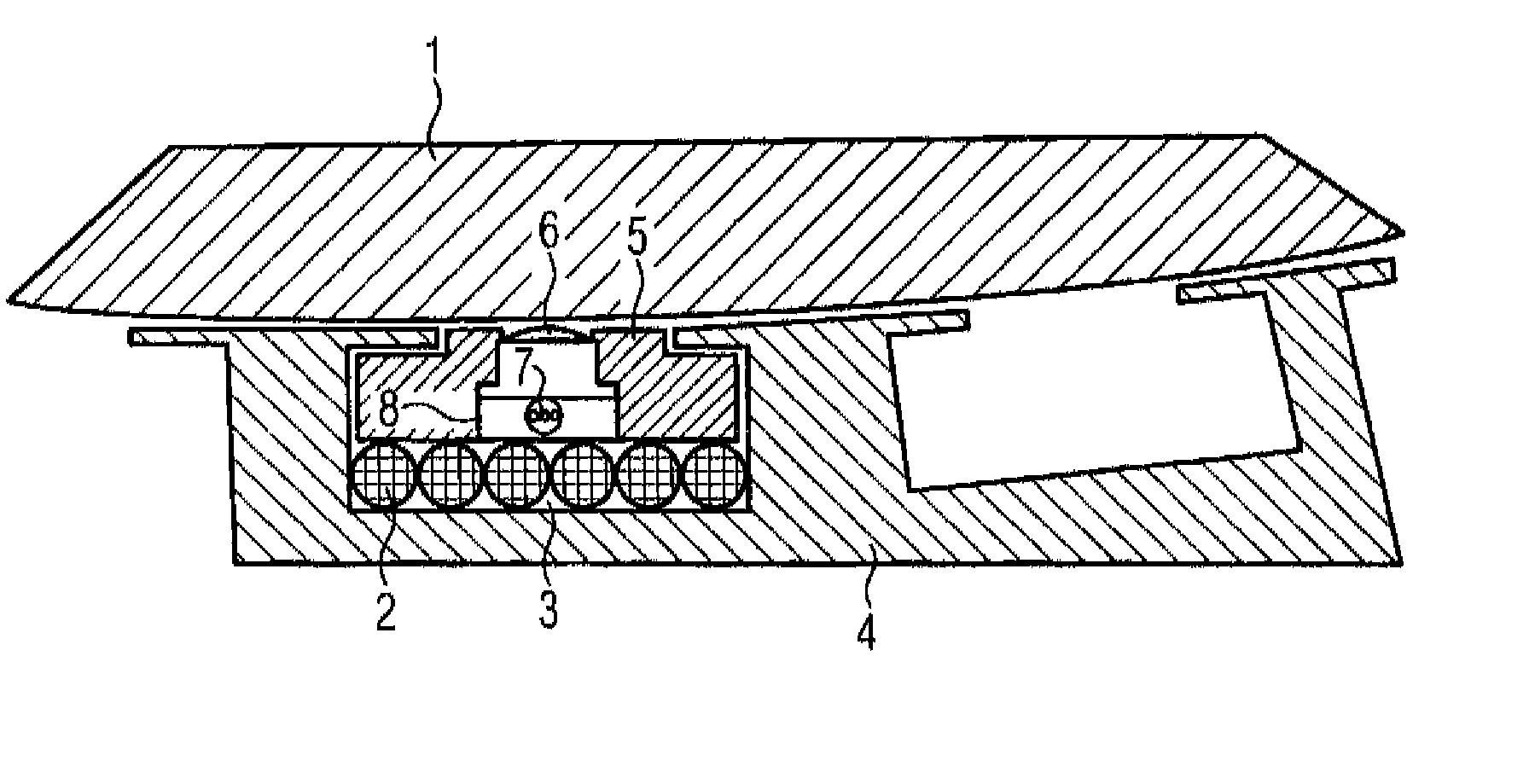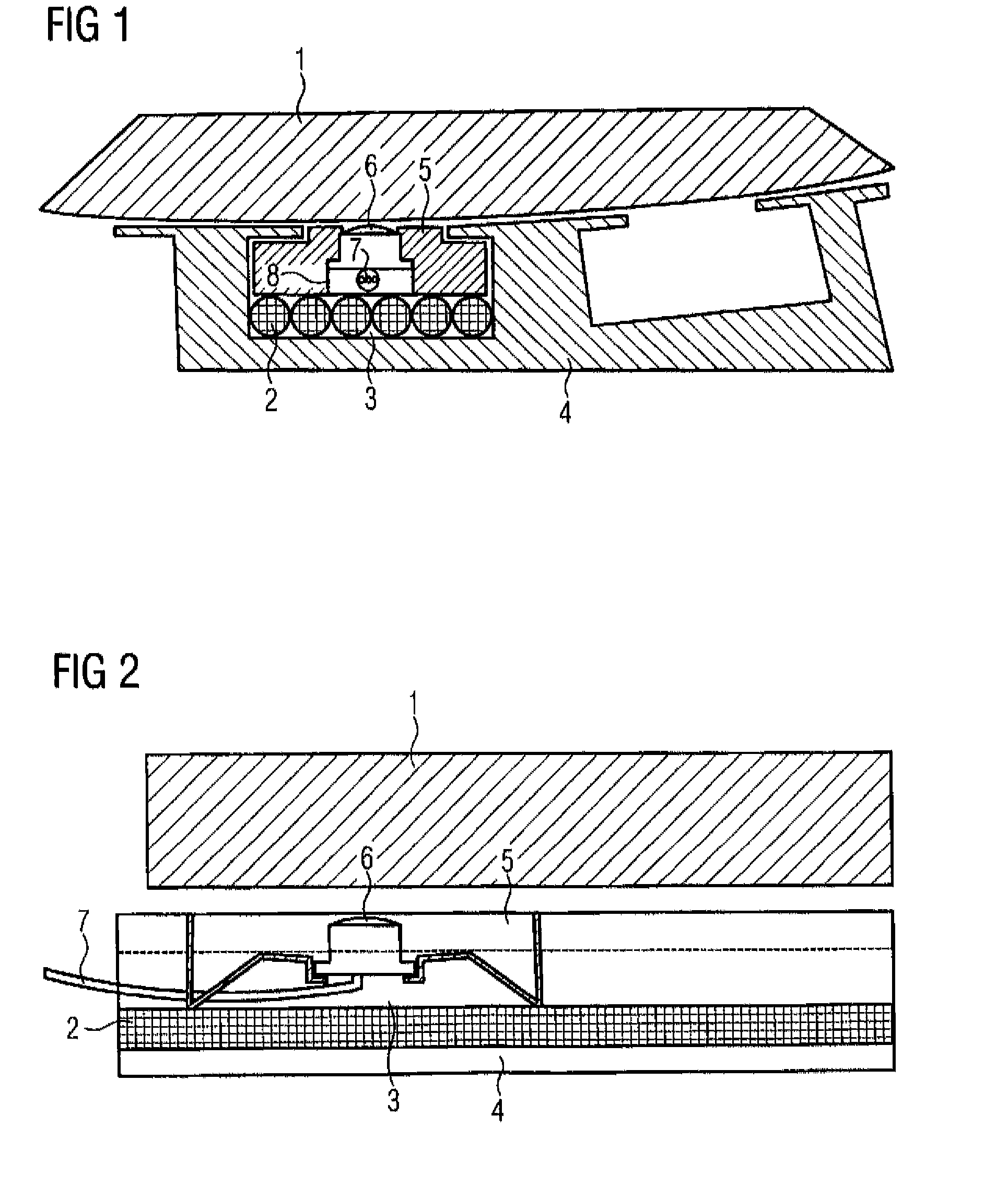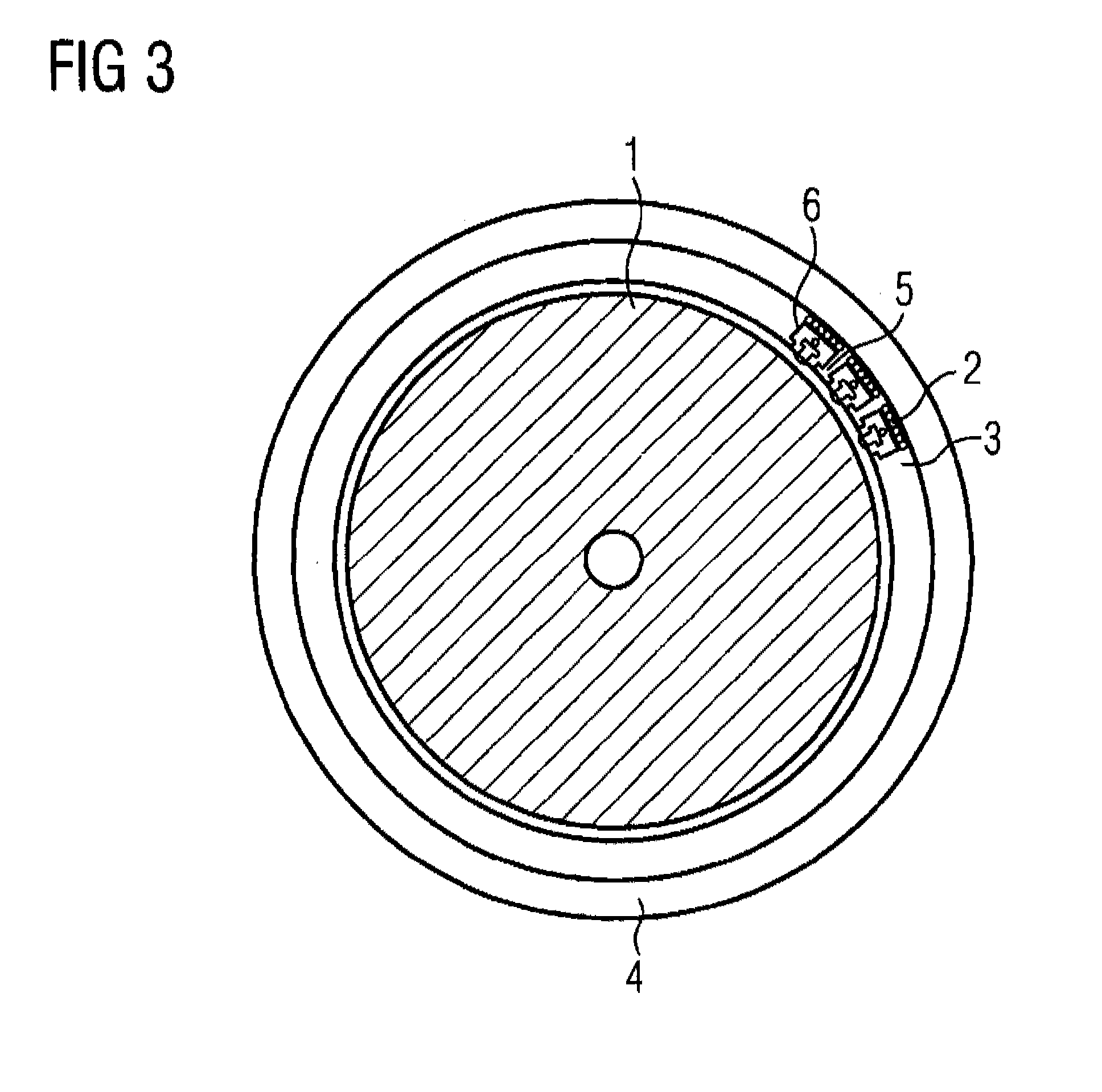Arrangement having an electric machine and method for operating an electric machine
a technology of electric machines and electrical machines, applied in the direction of dynamo-electric converter control, motor/generator/converter stoppers, optical radiation measurement, etc., can solve the problems of difficult operation, inability to measure the temperature of rotating parts in practice, and inability to use contact thermometers. , to achieve the effect of not increasing the total diameter of the electrical machine, good thermal conductivity and low thermal thickness
- Summary
- Abstract
- Description
- Claims
- Application Information
AI Technical Summary
Benefits of technology
Problems solved by technology
Method used
Image
Examples
Embodiment Construction
[0023]FIG. 1 schematically shows a sectional illustration (cross section) of a detail from an electrical machine having a rotor 1 and a stator 4. Slots 3 are made in the stator, with the winding 2 of the stator 4 running in said slots. For reasons of clarity, FIG. 1 shows only one layer with six turns of the winding 2. A blind hole 8 is made in a slot sealing wedge 5 of the slot 3, said blind hole being completely filled by the thermopile 6 (infrared temperature sensor). At the rotor 1 end, the blind hole 8 has a through-hole into which the detection side of the thermopile 6 projects, with this side of the thermopile 6 being composed of a transparent plastic on this side, said plastic having a surface which is configured in the form of a lens. Since the through-hole has a smaller diameter than the blind hole, the blind hole 8 is provided with a depth stop which prevents the thermopile 6 from being able to fall into the air gap between the rotor 1 and the stator 4. At the winding 2 e...
PUM
 Login to View More
Login to View More Abstract
Description
Claims
Application Information
 Login to View More
Login to View More - R&D
- Intellectual Property
- Life Sciences
- Materials
- Tech Scout
- Unparalleled Data Quality
- Higher Quality Content
- 60% Fewer Hallucinations
Browse by: Latest US Patents, China's latest patents, Technical Efficacy Thesaurus, Application Domain, Technology Topic, Popular Technical Reports.
© 2025 PatSnap. All rights reserved.Legal|Privacy policy|Modern Slavery Act Transparency Statement|Sitemap|About US| Contact US: help@patsnap.com



